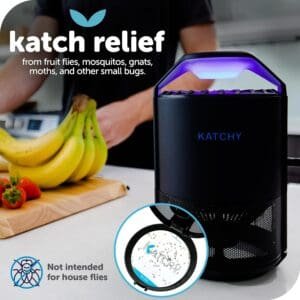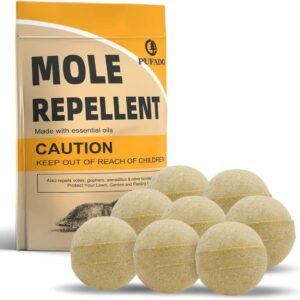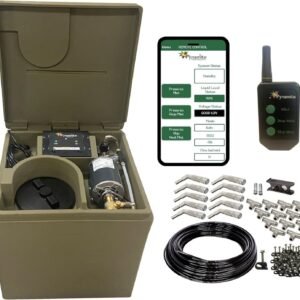10 natural ways to get rid of fruit flies and gnats
If you’ve ever found yourself swatting and shooing away tiny, pesky insects buzzing around your home, you’re not alone. Gnats and fruit flies can be a real annoyance, especially when they seem to appear out of nowhere. These tiny creatures are drawn to dampness, overripe fruit, and houseplants, making it important to address the underlying factors that attract them. Luckily, there are several effective DIY methods you can try to eliminate these unwanted guests. From vinegar and sugar traps to using rotting fruit as bait, or even employing the power of a simple candle, you’ll discover a range of solutions to tackle these frustrating insects. In this article, we’ll delve into how to get rid of gnats and fruit flies, as well as provide handy preventive measures to keep them from returning.
Methods to trap gnats
Using vinegar and sugar traps
One effective and budget-friendly method to trap gnats is by creating vinegar and sugar traps. Gnats are attracted to the sweet smell of vinegar and sugar, making this trap an excellent choice. To create this trap, mix equal parts of vinegar and sugar in a small container. You can use apple cider vinegar or white vinegar. Next, cover the container with plastic wrap and poke small holes on the surface. The gnats will be lured into the container through the holes and get trapped inside. Place these traps near areas where you notice gnats, such as near houseplants or fruit bowls.
Using rotting fruit traps
Another natural and effective way to trap fruit flies, a common type of gnat, is by using rotting fruit traps. Fruit flies are particularly attracted to the smell of ripe or decaying fruit. To create a fruit fly trap, place a piece of rotting fruit, such as a banana peel or overripe fruit, into a container. Cover the container with plastic wrap and poke small holes on the surface. The fruit flies will be drawn to the scent and enter the container through the holes. Once inside, they will be unable to escape. Empty and replace the trap regularly to ensure its effectiveness.
Using store-bought sticky traps
If you prefer a hassle-free solution, you can opt for store-bought sticky traps specifically designed to catch gnats and other flying insects. These traps are typically coated with a sticky adhesive that attracts gnats when they come into contact with it. Simply place the traps in areas where you notice high gnat activity, such as near windows, plants, or doorways. The gnats will be attracted to the traps and get stuck on the adhesive, effectively trapping them. Remember to follow the instructions provided by the manufacturer for the best results.
Using bleach to kill drain flies
Drain flies, also known as sewer gnats or moth flies, are small insects that are often found near drains, sewage systems, or stagnant water. To kill drain flies and prevent infestations, you can use bleach. Start by identifying the source of the infestation, which is usually a build-up of organic matter inside the drain pipe. Pour a small amount of bleach down the affected drain and let it sit for a few hours or overnight. The bleach will kill the drain flies and break down the organic matter, eliminating their breeding grounds. Flush the drain with water to remove any remaining debris or flies. Repeat this process regularly to prevent future infestations.
Using a candle to attract and eliminate gnats
Gnats are attracted to sources of light, making candles an effective tool for attracting and eliminating them. To use a candle to eliminate gnats, place it in a strategic location where gnats are present, such as near windows or outdoor areas. Turn off other lights in the room to make the candle flame the primary light source. The gnats will be drawn to the candle flame and fly towards it. Be cautious when using candles and ensure they are placed in safe areas away from flammable objects. This method can be particularly effective for eliminating gnats in outdoor settings or during warmer months when windows or doors are frequently open.
Preventing gnats from returning
Maintaining low humidity in your home
Gnats thrive in humid environments, so maintaining low humidity levels in your home can help prevent their return. Use a dehumidifier or air conditioner to reduce moisture levels. Ensure proper ventilation in bathrooms, kitchens, and laundry rooms by using exhaust fans or opening windows. Regularly check and repair any leaks or areas of moisture accumulation, such as pipes, faucets, or roof leaks. By keeping the humidity in your home under control, you create an environment where gnats are less likely to thrive.
Taking out trash regularly and sealing it tightly
Gnats are attracted to the scent of decaying organic matter, including food scraps in the trash. To prevent gnats from returning, make sure to take out the trash regularly and seal it tightly in a bag or bin. This prevents gnats from accessing the food waste and breeding inside the trash. Additionally, cleaning the trash can regularly with soap and water can eliminate any lingering smells that might attract gnats. By practicing good waste management habits, you can significantly reduce the chances of gnats infesting your home.
Avoiding overwatering houseplants
Overwatering houseplants can create damp soil conditions that are attractive to gnats, particularly fungus gnats. These gnats lay their eggs in the moist soil and their larvae feed on organic matter and plant roots. To prevent gnats from infesting your houseplants, avoid overwatering and ensure proper drainage. Allow the top layer of soil to dry out between waterings. You can also place a layer of sand or small stones on the soil surface to discourage gnats from laying eggs. By maintaining a balanced watering routine, you can keep your houseplants healthy while deterring gnats.
Keeping drains clean and dry
Drains, particularly those in the kitchen or bathroom, can be breeding grounds for gnats, especially drain flies. To prevent gnats from returning, keep your drains clean and dry. Regularly clean the drains using a mixture of vinegar and hot water or a commercial drain cleaner. This will help remove any residue or organic matter that attracts gnats. After using sinks or showers, dry them thoroughly to eliminate excess moisture that gnats thrive in. By maintaining clean and dry drains, you can discourage gnats from establishing a breeding site in your home.
Implementing other preventive measures
In addition to the specific methods mentioned above, there are several other preventive measures you can take to discourage gnats from entering your home. Avoid leaving water dishes or pet bowls out overnight, as gnats are attracted to standing water. Seal openings where gnats can enter the house, such as cracks in windows, doors, or screens. Keep your kitchen and dining areas clean by wiping up spills and regularly emptying and cleaning trash cans. By implementing these preventive measures on a regular basis, you can significantly reduce the likelihood of gnats returning to your home.
In conclusion, gnats can be a bothersome presence in our homes, but with the right methods and preventive measures, you can effectively trap and eliminate them. Whether you choose to use vinegar and sugar traps, rotting fruit traps, store-bought sticky traps, bleach, or candles, each method has its own advantages. Additionally, by maintaining low humidity, proper trash management, avoiding overwatering houseplants, keeping drains clean and dry, and implementing other preventive measures, you can significantly reduce the chances of gnats returning. Remember to identify the type of gnat you are dealing with and tailor your methods accordingly. With persistence and patience, you can successfully rid your home of these pesky insects and enjoy a gnat-free environment.







